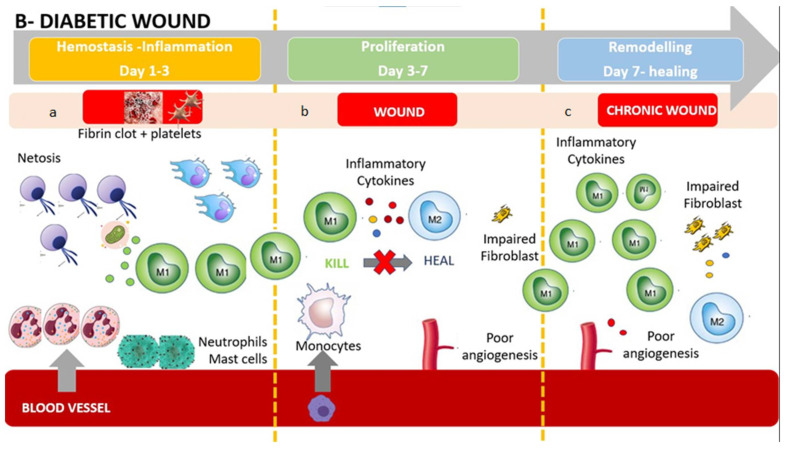Figure 2.
The diabetic wound: (a) Impaired wounds showed an upregulated influx of neutrophils and mast cells, leading to an intense inflammatory response, causing collateral damage, and extending the inflammatory phase to subsequent phases. The persistent higher release of inflammatory cytokines produces M1 activation with further release of inflammatory substances. (b) Monocyte recruitments are poor due to arterial occlusion and impaired microcirculation. Poor angiogenesis and glycated proteins result in an impaired fibroblast activity. The hypoxic environment brings oxidative stress, driving inflammatory M1 macrophage polarization and impairment of fibroblasts, resulting in poor ECM reorganization and a persistent inflammatory environment. The polarization in M2 is absent or extremely poor, causing a further accumulation of M1. (c) Impaired wound-resident cells remain ineffective and in an inflammatory condition. Collagen reorganization resolves poorly, resulting in weak, non-functional skin that can re-injure and potentially ulcerate, perpetually inflamed. Macrophages are still activated in the inflammatory phenotype M1. The wound does not heal.

